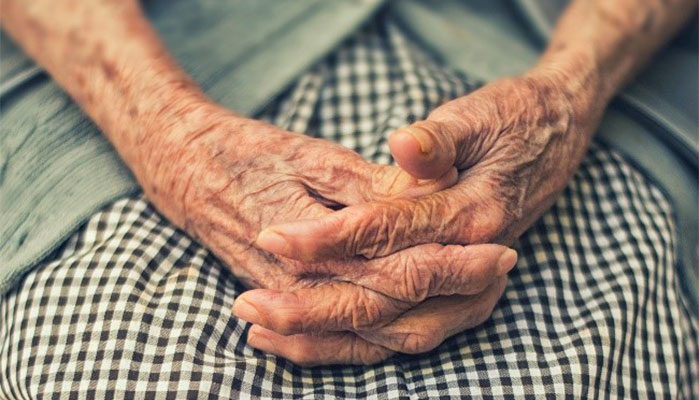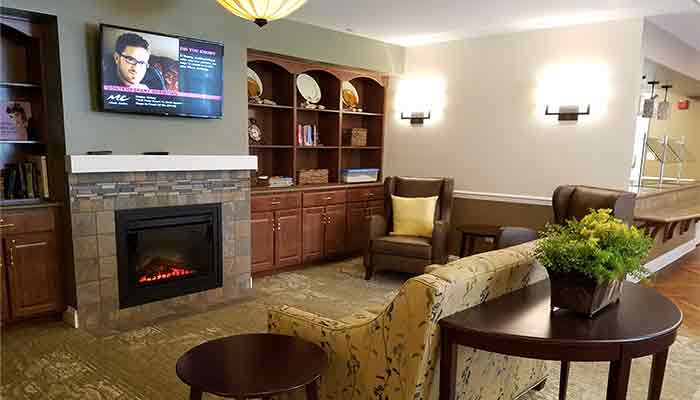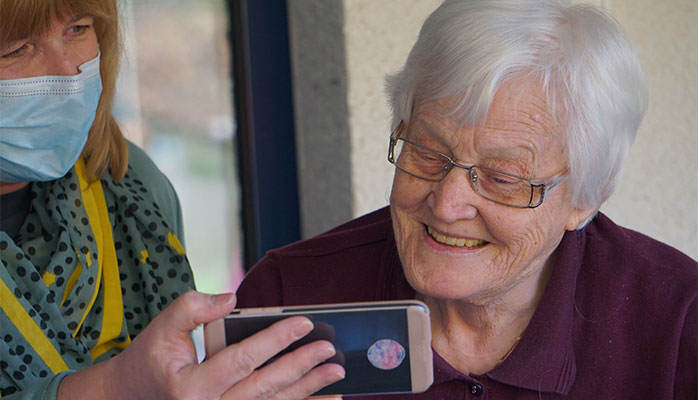
Senior living communities have been hit hard with the COVID-19 pandemic and it continues to be a major disruptor with the looming possibility of new regulations and changes in design guidelines that haven’t been seen in a generation. Of note is the growing interest in the household model and how it could minimize the spread of infection and provide safe socialization during a lockdown.
The Household Model: A Self-Contained Neighborhood
The household model, or similar models like pocket neighborhoods, small houses or the green house model, is comprised of self-contained “neighborhoods” where a small group (typically 12-20) of residents live, dine and socialize together.
It includes individual resident rooms, a shared kitchen, dining and living area. It focuses on person-centered care and the resident’s autonomy and choice. These models allow for staff and residents to develop close social bonds and can be a more welcoming scale compared to large traditional models.

Living Room in a household wing at the Halmstad, Batavia, IL
Breaking Down Density While Isolating
The benefit of the household model during an infection outbreak is the ability to breakdown density and isolate households from each other and the rest of the community to reduce the spread. Residents within their designated household, if free from the virus, could get out of their rooms and socialize with each other.
In a traditional model this could be done by having a plan to strategically separate and compartmentalize groups of residents in case of a future lockdown. Underutilized common spaces could be adapted to dining areas and assigned to specific “neighborhoods” to allow for safe socialization.
The ability to have access to the outdoors is particularly important to the health and wellbeing of residents during a shelter-in-place order. While private balconies are ideal, a shared terrace per neighborhood could provide that access to nature.

Design Considerations
For a household format to successfully prevent the spread of infection in a community, there are many design and operational considerations including:
- Staff dedication to select households and strict infection control protocols to prevent cross-contamination.
- HVAC separation between households and elevated filtration.
- Neutral areas where food or supplies can be received safely.
Other considerations that may help a community better handle a future pandemic event:
- A room that can be converted to an isolation room. It would be ideal to have this option per unit.
- Option for staff to temporarily live in the household.
- A dedicated room to safely meet with family while maintaining social distance.
- Technology infrastructure and access for residents.
- Access to telemedicine without leaving household.
While the senior living industry has progressively moved away from the institutional model, this current event has brought to light the deficiencies that remain but it may be the catalyst to lead us to a more robust and holistic approach with person-centered care.



